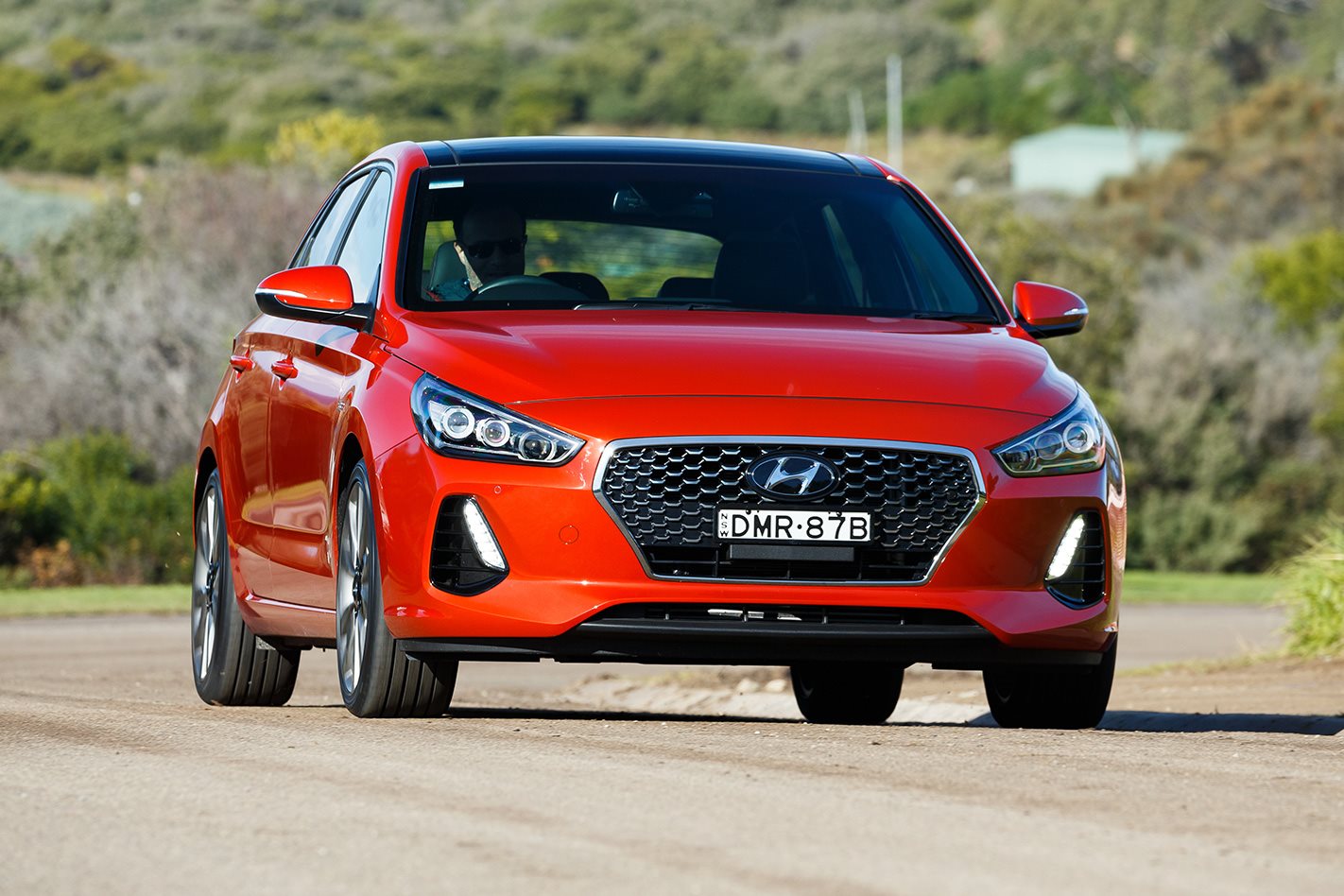
TELL ME ABOUT THIS CAR
The second-generation Hyundai i30 was launched last year with great acclaim for the advances it made on the previous model, in particular the way it drives and the way the interior makes you feel. Nominated for this year’s Wheels Car of the Year award but knocked out in the first round, just the fact the i30 was shortlisted is a win for the brand.
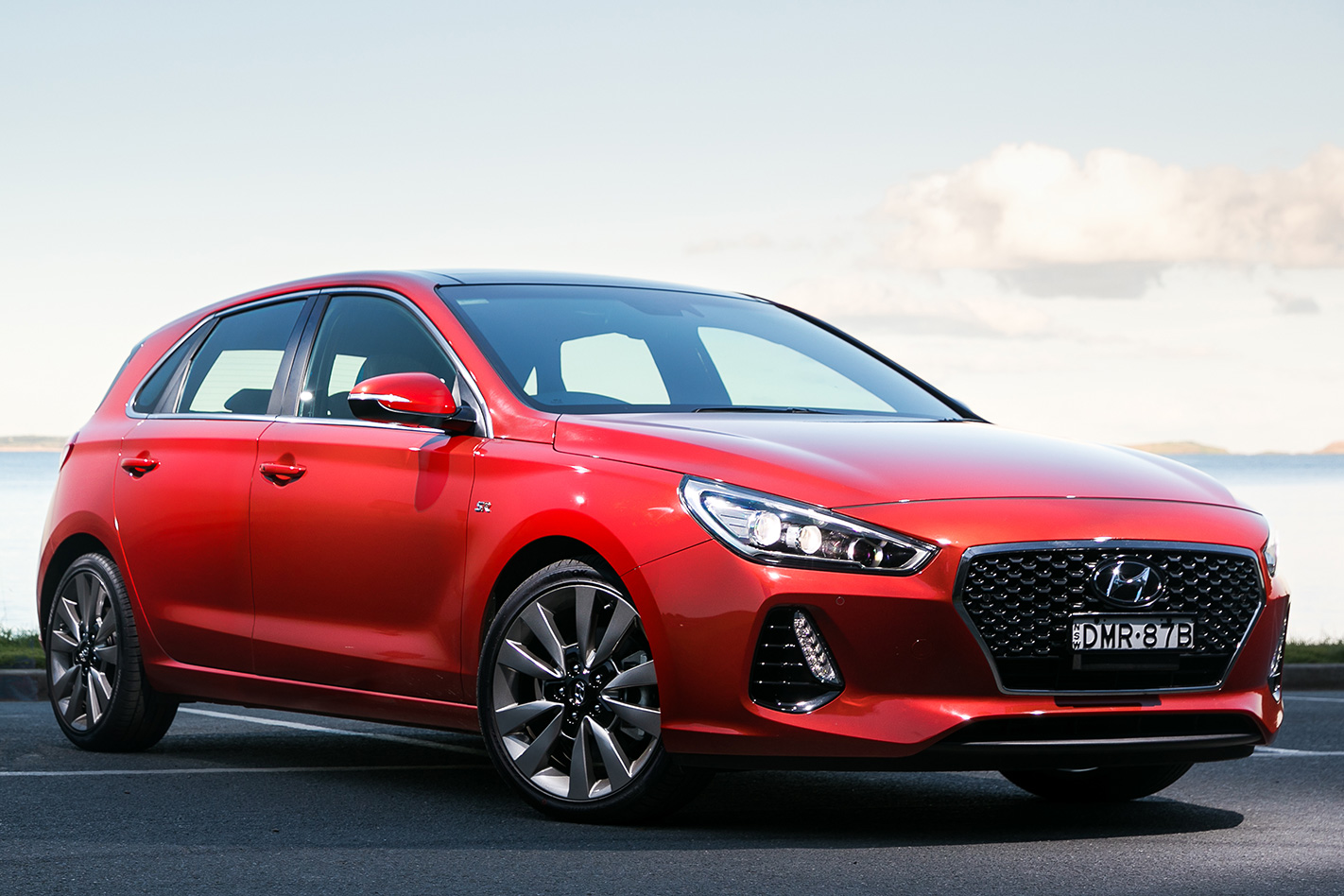
The i30 SR, which uses a 1.6-litre turbocharged four-cylinder engine and either a six-speed manual gearbox or a seven-speed dual-clutch auto, sits in the middle of the Hyundai i30 range for price but toward the top end for performance. The one we’re focusing on here, the $2500 more expensive auto, is priced from $25,990.
STRENGTHS
- It rides and handles better than cheaper versions of the i30. The SR uses a stiffer multilink rear suspension than the Active and Elite models, which use a cheaper, less refined torsion beam set-up. This makes the i30 SR’s ride firmer than the entry-level, $19,990 Go and the $21,090 Active, but the upside is that the i30 SR drives like a hot hatch, with decent cornering and more steering feel – both qualities that enthusiast drivers will appreciate.
- The turbo 1.6-litre “GDi” engine produces 150kW and 265Nm, which again makes this version of the i30 something of a wannabe hot hatch. It gives the i30 SR a sense it is quick, capable and refined.
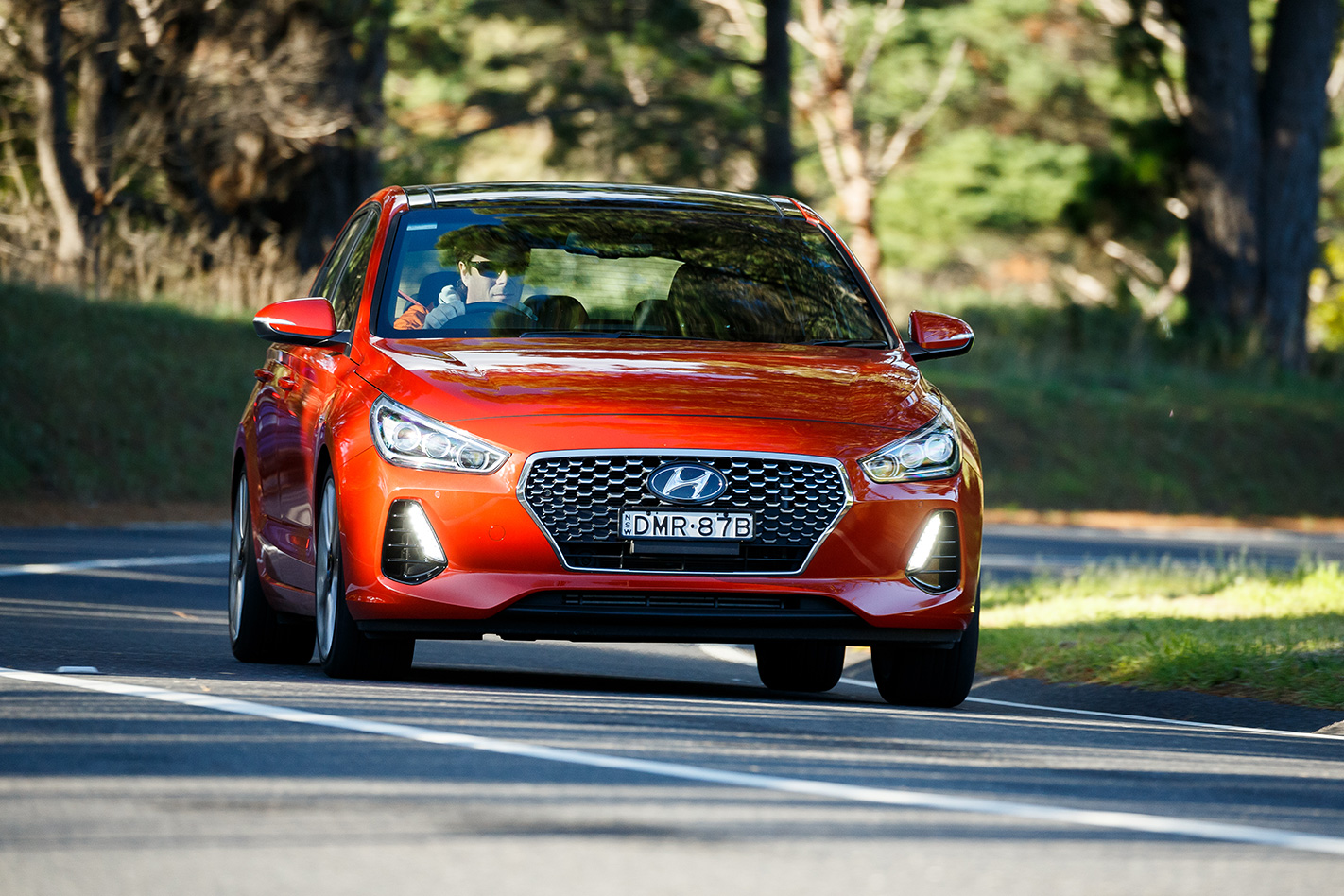
- The SR’s interior in particular will draw a smile every time you look at it. By default, the i30 interior with its soft-touch emphasis, clear instrument cluster, leather steering wheel and tombstone-style multimedia interface feels premium, and the SR takes that a step further. Of note, contrasting red trim on the seatbelts, around the dash and in the stitching tracing the edges the front seats give the cabin a big visual lift.
- The SR has paddle shifters for the gearbox mounted on the steering wheel. It makes the ownership experience more like living with a hot hatch than a forgettable, everyday commuter. There’s also dash-mounted engine start button allowing you to keep the key fob in your pocket.
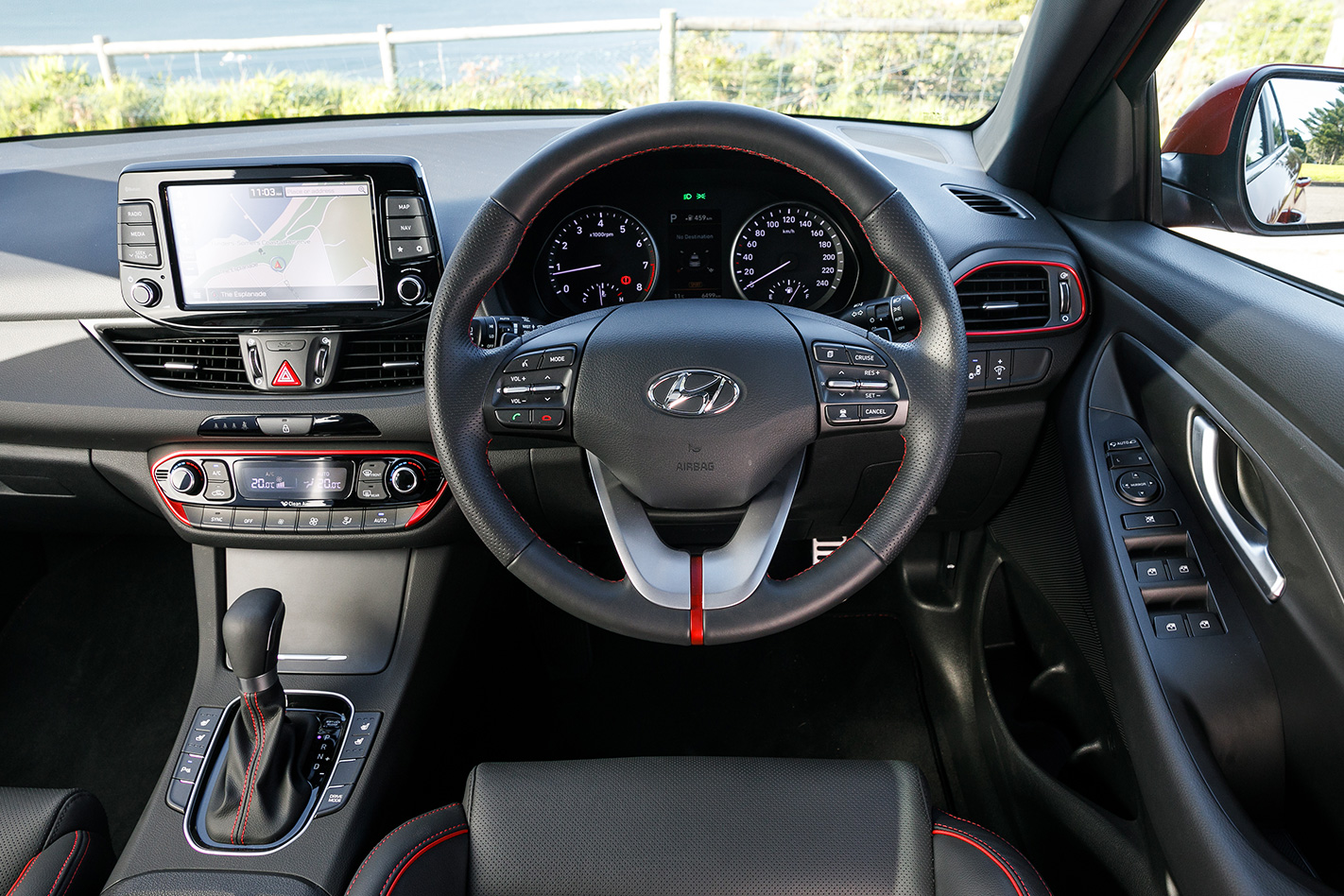
- The Hyundai i30 has a low cost of ownership. You’re covered by a three-year warranty, and servicing for the more performance-focused SR’s turbo engine is capped at $269 for the first three years or every 15,000km, whichever comes first.
- The automatic version of the i30 SR gains active cruise control and automatic emergency braking. If you opt for the $2500 cheaper six-speed manual version of the hatch, these are not included.
- The boot is pretty versatile. There’s only a space-saver spare under its floor, which sits low in its default mode. However, you can set the floor at a higher level to create a separate storage space beneath it.
- The i30 SR is a lot more affordable now than when it was launched. A couple of years ago it would have set you back $28,950. The version you buy today is almost $3000 cheaper.
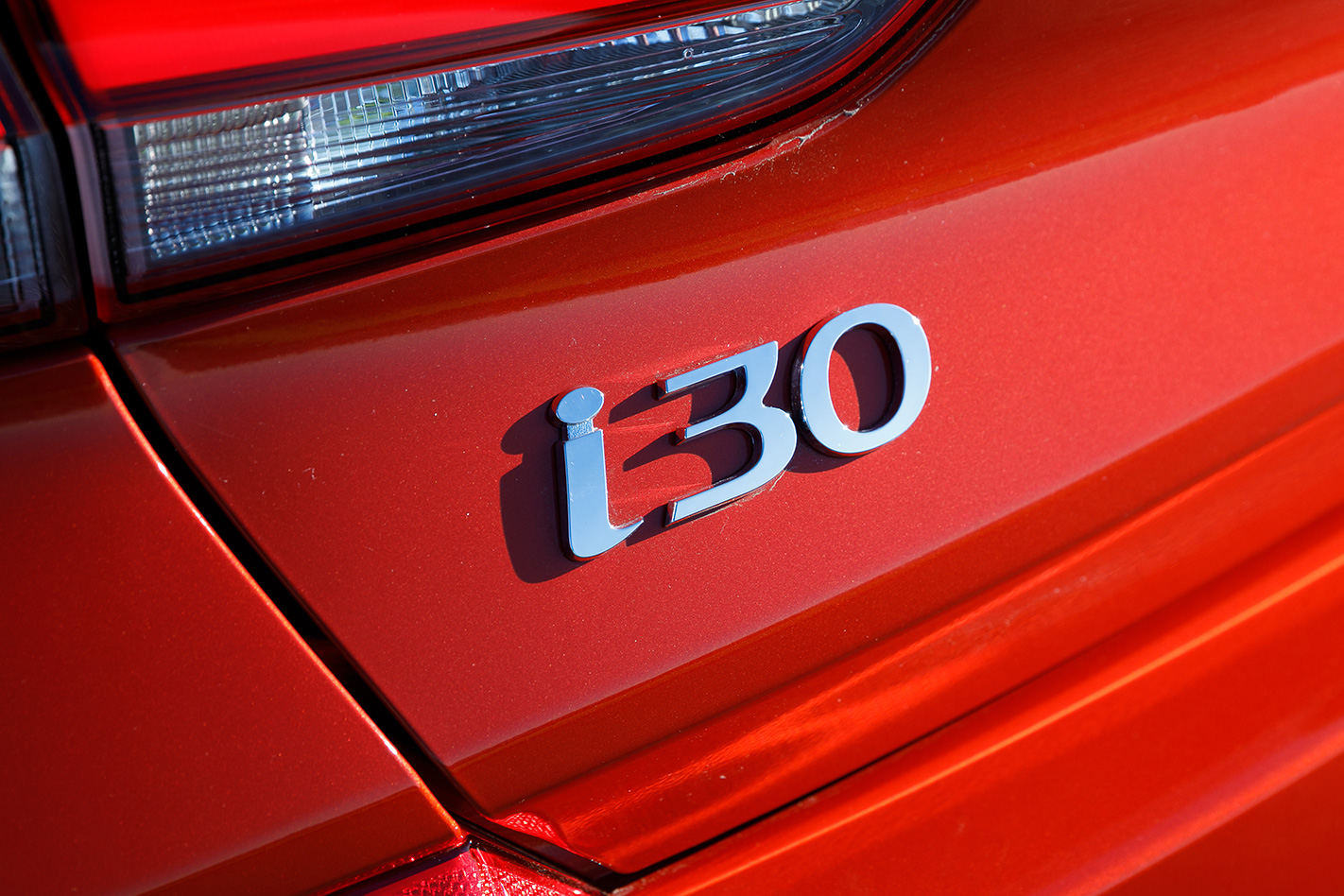
WEAKNESSES
- The i30 has no active fuel management such as a stop-start system or cylinder deactivation and so on, so it can be a bit thirsty when driven with enthusiasm. On paper, it uses more fuel than competitors including the soon-to-be-updated Toyota Corolla and the ageing but still relevant Mazda 3.
- The SR’s dual-clutch gearbox can be a bit lurchy in low-speed situations, such as shuffling in or out of a shopping centre car park, or in stop-start traffic. The cheaper non-turbo 2.0-litre versions use a traditional single-clutch automatic that is much smoother. The faster-changing dual-clutch gearbox’s benefit is when you drive the i30 harder.
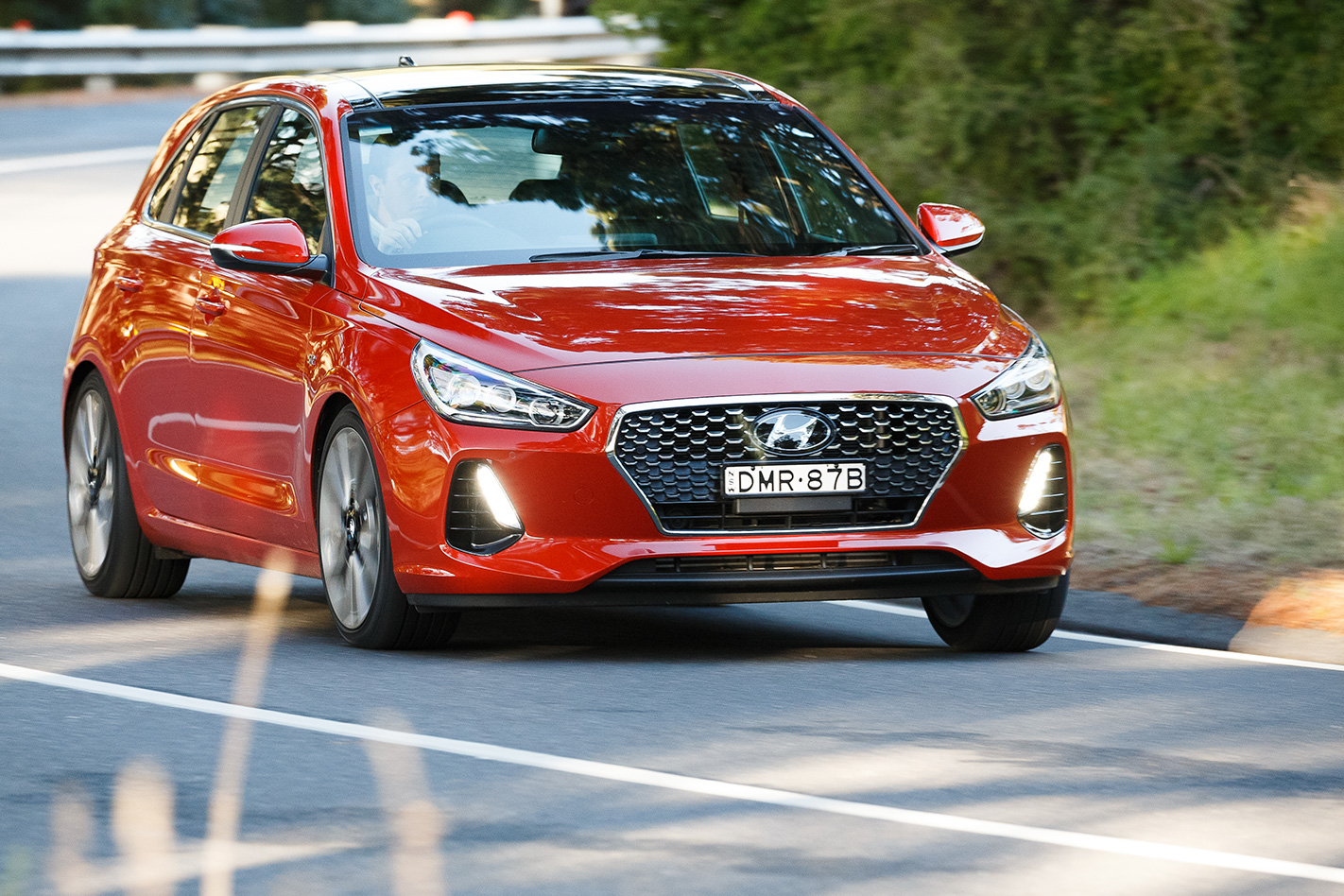
- It’s a bit noisy on its low-profile 18-inch Hankook rubber. The tyres are nice and sticky, and help with the i30 SR’s cornering poise, but the downside is that over coarse-chip sections of freeway the tyres can generate a high level of road roar.
- The sunroof is a $2000 option. That’s expensive to bring a bit more natural light into the cabin, but you do get one of the biggest areas of glass in the class.
- There are no standard heated seats – to get them, you need to spend another $8500 for the i30 SR Premium. You’ll grumble about this, too, in the clutch of a southern-climate winter.
- The i30’s back seat isn’t as big on space as some rivals. Cars like the Honda Civic and the Subaru Impreza offer a bit more rear-seat legroom than the i30, which potentially makes them a better choice for the daily school run.
- It’s a small quibble, but only the driver’s door has an automatic window, and that’s only if you’re dropping it. Closing it is a long hold of the switch.
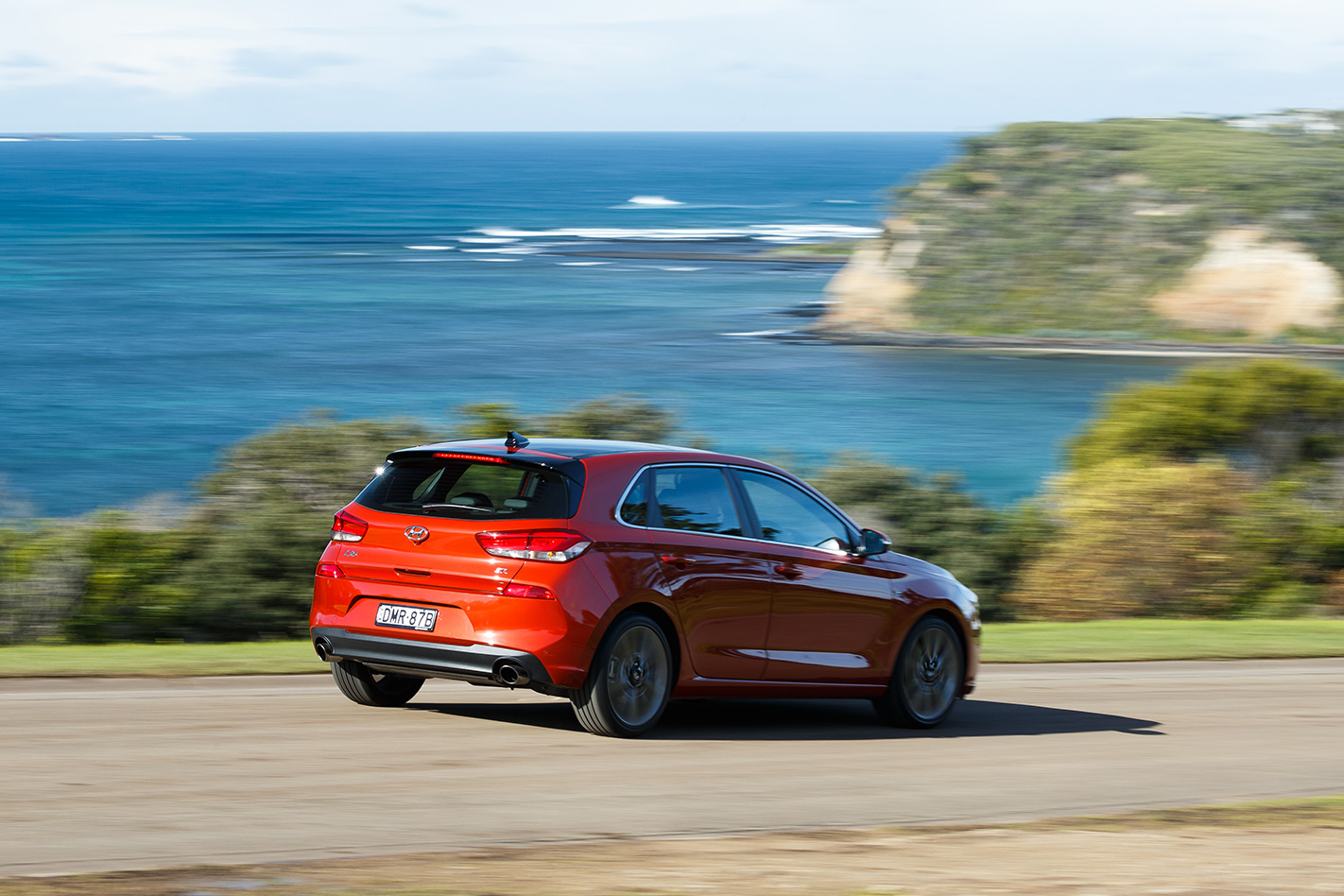
ANY OTHERS I SHOULD CONSIDER?
Popular cars in this segment include the Toyota Corolla (which arrives as an all-new model from August), the Mazda 3, the Subaru Impreza, Volkswagen Golf, the Civic from Honda, the Ford Focus, Holden’s Astra, and, as more style-driven, cosmopolitan alternatives, the Peugeot 308 and Renault Megane.



